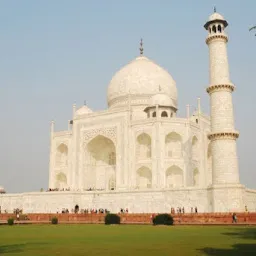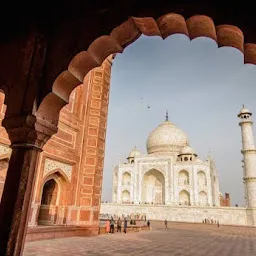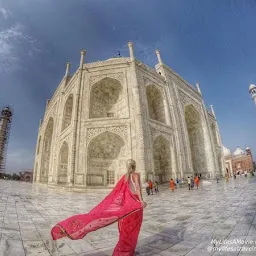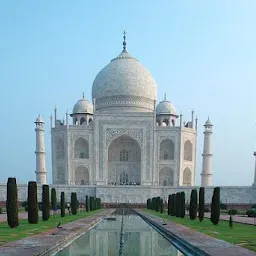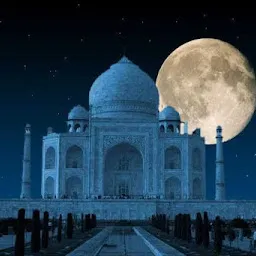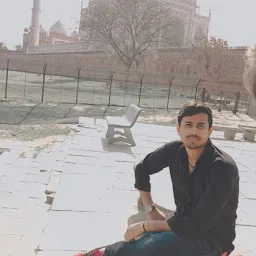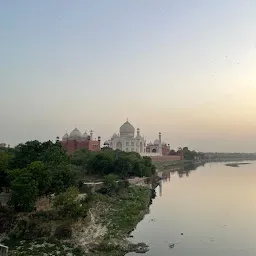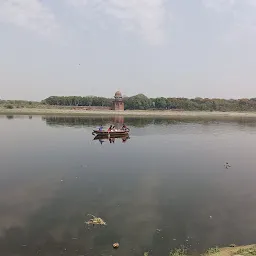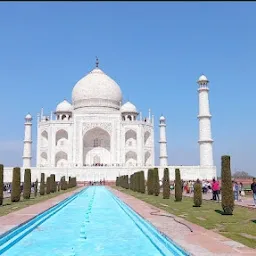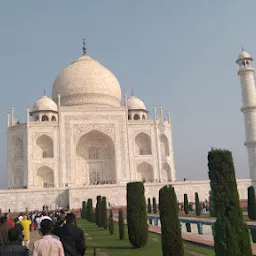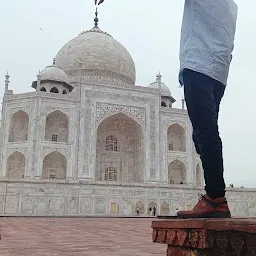Agra Boat Agency
Thursday open from 07:00 AM to 06:00 PM
Agra Boat Agency is a boat club located in Agra, Uttar Pradesh. The average rating of this place is 4.60 out of 5 stars based on 34 reviews. The street address of this place is 52HV+4P9, Forest Colony, Tajganj, Agra, Uttar Pradesh 282006, India. It is about 1.05 kilometers away from the Yamuna Bridg railway station.
- Where is Agra Boat Agency located?
- Agra Boat Agency is located at 52HV+4P9, Forest Colony, Tajganj, Agra, Uttar Pradesh 282006, India.
- What is the off day for Agra Boat Agency?
- Agra Boat Agency is 7 days open between 07:00 AM to 06:00 PM.
- What is the nearest railway station from Agra Boat Agency?
- Yamuna Bridg railway station is the nearest railway station to Agra Boat Agency. It is nearly 1.05 kilometers away from it.
Rajiv Vashist 57 months ago
Construction of the mausoleum was essentially completed in 1643 but work continued on other phases of the project for another 10 years. The Taj Mahal complex is believed to have been completed in its entirety in 1653 at a cost estimated at the time to be around 32 million rupees, which in 2015 would be approximately 52.8 billion rupees (U.S. $827 million). The construction project employed some 20,000 artisans under the guidance of a board of architects led by the court architect to the emperor, Ustad Ahmad Lahauri.
The Taj Mahal was designated as a UNESCO World Heritage Site in 1983 for being "the jewel of Muslim art in India and one of the universally admired masterpieces of the world's heritage". It is regarded by many as the best example of Mughal architecture and a symbol of India's rich history. The Taj Mahal attracts 7–8 million visitors a year and in 2007, it was declared a winner of the New7Wonders of the World (2000–2007) initiative.
Inspiration
The Taj Mahal was commissioned by Shah Jahanin 1631, to be built in the memory of his wife Mumtaz Mahal, a Persian princess who died on 17 June that year, giving birth to their 14th child, Gauhara Begum.[6][7] Construction started in 1632,[8] and the mausoleum was completed in 1643, while the surrounding buildings and garden were finished five years later.[9] The imperial court documenting Shah Jahan's grief after the death of Mumtaz Mahal illustrates the love story held as the inspiration .
Ramesh Kunvat 45 months ago
The Taj Mahal incorporates and expands on design traditions of Persian and earlier Mughal architecture. Specific inspiration came from successful Timurid and Mughal buildings including the Gur-e Amir (the tomb of Timur, progenitor of the Mughal dynasty, in Samarkand),[11] Humayun's Tomb which inspired the Charbagh gardens and hasht-behesht (architecture) plan of the site, Itmad-Ud-Daulah's Tomb (sometimes called the Baby Taj), and Shah Jahan's own Jama Masjid in Delhi. While earlier Mughal buildings were primarily constructed of red sandstone, Shah Jahan promoted the use of white marble inlaid with semi-precious stones. Buildings under his patronage reached new levels of refinement.[12]
Tomb
The tomb is the central focus of the entire complex of the Taj Mahal. It is a large, white marble structure standing on a square plinth and consists of a symmetrical building with an iwan (an arch-shaped doorway) topped by a large dome and finial. Like most Mughal tombs, the basic elements are Persian in origin.[13]
The base structure is a large multi-chambered cube with chamfered corners forming an unequal eight-sided structure that is approximately 55 metres (180 ft) on each of the four long sides. Each side of the iwan is framed with a huge pishtaq or vaulted archway with two similarly shaped arched balconies stacked on either side. This motif of stacked pishtaqs is replicated on the chamfered corner areas, making the design completely symmetrical on all sides of the building. Four minarets frame the tomb, one at each corner of the plinth facing the chamfered corners. The main chamber houses the false sarcophagi of Mumtaz Mahal and Shah Jahan; the actual graves are at a lower level.[14]
Taj Mahal gallery

Taj Mahal at sunrise from Main Entrance.

Four minarets frame the tomb.

Interior view of the vaulted dome over the tombs of Shah Jahan and Mumtaz.

The false sarcophagi of Mumtaz Mahal and Shah Jahan in the main chamber.

The actual tombs of Mumtaz Mahal and Shah Jahan in the lower level.

Main marble dome, smaller domes, and decorative spires that extend from the edges of the base walls.
The most spectacular feature is the marble dome that surmounts the tomb. The dome is nearly 35 metres (115 ft) high which is close in measurement to the length of the base, and accentuated by the cylindrical "drum" it sits on which is approximately 7 metres (23 ft) high. Because of its shape, the dome is often called an onion dome or amrud (guava dome).[15] The top is decorated with a lotus design which also serves to accentuate its height. The shape of the dome is emphasised by four smaller domed chattris (kiosks) placed at its corners, which replicate the onion shape of the main dome. The dome is slightly asymmetrical.[16] Their columned bases open through the roof of the tomb and provide light to the interior. Tall decorative spires (guldastas) extend from edges of base walls, and provide visual emphasis to the height of the dome. The lotus motif is repeated on both the chattris and guldastas. The dome and chattris are topped by a gilded finial which mixes traditional Persian and Hindustani decorative elements.[17]
The main finial was originally made of gold but was replaced by a copy made of gilded bronze in the early 19th century. This feature provides a clear example of integration of traditional Persian and Hindu decorative elements.[18] The finial is topped by a moon, a typical Islamic motif whose horns point heavenward.[19]
The minarets, which are each more than 40 metres (130 ft) tall, display the designer's penchant for symmetry. They were designed as working minarets— a traditional element of mosques, used by the muezzin to call the Islamic faithful to prayer. Each minaret is effectively divided into three equal parts by two working balconies that ring the tower. At the top of the tower is a final balcony surmounted by a chattri that mirrors the design of those on the tomb. The chattris all share the same decorative elements of a lotus design topped by a gilded finial. The minarets were constr
Prithiviraaj kiridarane 69 months ago
this place was quite good to admire the beauty of sunset with taj mahal. Never ever mss this beautiful view of tajmahal with reflection on river
- Address
- 52HV+4P9, Forest Colony, Tajganj, Agra, Uttar Pradesh 282006, India
| Saturday | 07:00 AM - 06:00 PM |
|---|---|
| Sunday | 07:00 AM - 06:00 PM |
| Monday | 07:00 AM - 06:00 PM |
| Tuesday | 07:00 AM - 06:00 PM |
| Wednesday | 07:00 AM - 06:00 PM |
| Thursday | 07:00 AM - 06:00 PM |
| Friday | 07:00 AM - 06:00 PM |
N.B. The timetable is based on our last updated data on January 22, 2024.
